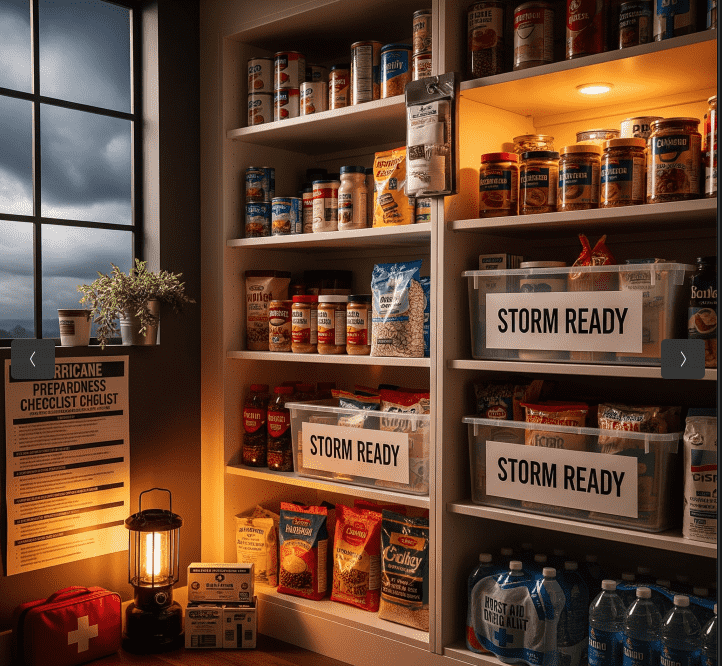
Newsletter Subscribe
Enter your email address below and subscribe to our newsletter

Enter your email address below and subscribe to our newsletter

When hurricanes, tropical storms, or other disasters hit, one of the first things to fail is often the power grid—and with it, your ability to cook, refrigerate, or even access fresh food. Being prepared with the right food supplies and having storm-ready recipes can mean the difference between staying nourished and facing hunger during an emergency.
This guide covers essential strategies for storm-ready food prep, including:
✔ Why emergency food planning is critical
✔ Best types of survival foods (long-lasting, no-cook, nutrient-dense)
✔ Smart storage solutions to keep food safe
✔ How to build a storm-proof pantry
✔ Alternative cooking methods when power is out
Every year, hurricanes and coastal storms leave thousands without power for days—sometimes weeks. Supermarket shelves empty quickly, delivery services halt, and without preparation, families can find themselves struggling to find safe, nutritious meals.
Not all foods are created equal when it comes to emergency prep. Focus on shelf-stable, nutrient-dense options that require minimal preparation.
These should form the backbone of your emergency pantry:
When power is out, you need food that requires zero cooking:
(We’ll dive deeper into specific no-cook recipes in a follow-up guide.)
Food is useless without clean water. Store at least 1 gallon per person per day (3+ days’ supply minimum). Include:
Even the best survival foods won’t help if they’re ruined by flooding, pests, or heat.
✅ Use airtight, waterproof containers (plastic bins with gamma seals)
✅ Elevate food off the ground (protect against floodwater)
✅ Keep in a cool, dark place (heat speeds up spoilage)
✅ Rotate stock (use the “first in, first out” method)
A well-prepared pantry should cover at least one week of meals per person. Here’s a sample checklist:
| Category | Examples | Quantity (Per Person) |
| Proteins | Canned tuna, beans, peanut butter | 7+ servings |
| Carbs | Rice, pasta, crackers | 10+ servings |
| Fruits/Veggies | Canned fruit, dried vegetables | 5+ servings |
| Dairy/Fats | Powdered milk, olive oil | 3+ servings |
| Snacks | Granola bars, nuts, jerky | 7+ servings |
If you have a gas grill, camp stove, or solar cooker, you can expand your meal options.
Pro Tip: Pre-cook and freeze meals before a storm (if you have a generator).
Food preparedness isn’t paranoia—it’s practicality. By stocking the right foods, storing them properly, and knowing how to cook without power, you can ensure your family stays fed and healthy during an emergency.
Stay safe, stay prepared, and eat well—no matter what the weather brings.
(Coming soon: Detailed no-cook recipes, diabetic-friendly storm meals, and kid-approved emergency snacks.)